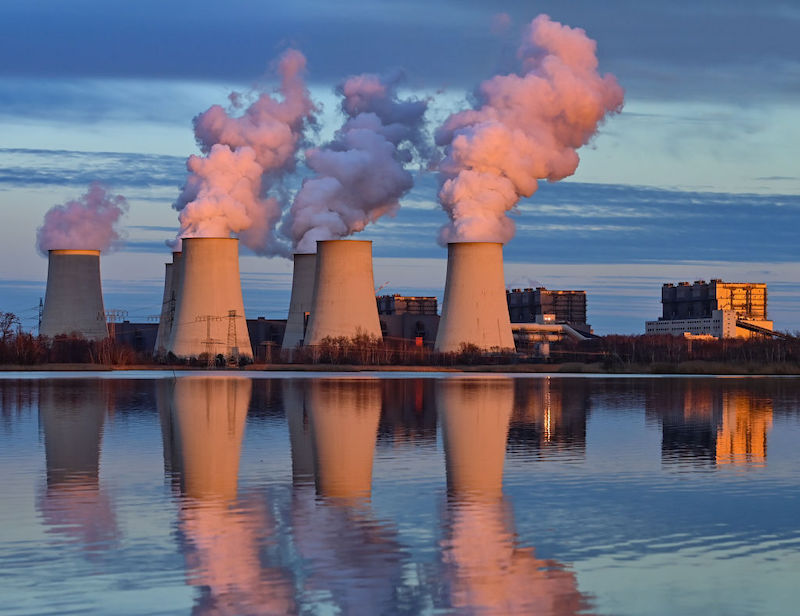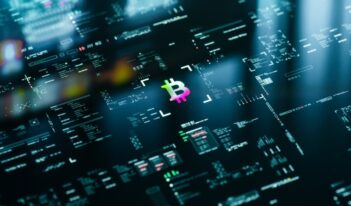
Distributed ledger technology can facilitate more efficient and reliable carbon credit markets.
Improved international voluntary carbon markets are emerging as a key means to tackle the critical issue of climate change. Although achieving immediate carbon emissions reductions by all participants in the global economy is a clear climate priority, carbon offsets can play an important complementary role in accelerating those efforts.
Carbon offsetting allows organizations to compensate for any emissions that they are unable to reduce due to prohibitive costs or insufficient technology. Carbon offsets permit organizations to finance the reduction of emissions from other sources or the removal of greenhouse gas emissions from the atmosphere. An increasing number of companies around the globe—many spurred by strong shareholder engagement in climate issues—are committing both to reduce and offset emissions on a voluntary basis.
Industry experts predict that demand for carbon offsets will increase exponentially in the near term. Well-functioning voluntary carbon markets will be necessary to meet this demand.
The urgent need for voluntary carbon markets animated the creation of a new private sector-led Taskforce on Scaling Voluntary Carbon Markets. The Taskforce has developed a blueprint to create a voluntary carbon market at scale that has integrity and is transparent, verifiable, liquid, and robust. Voluntary carbon markets have grown significantly in recent years, but they remain relatively small and highly fragmented.
The Taskforce recommended stakeholders build new infrastructure to support carbon credit markets at scale, such as centralized exchanges, clearinghouses, and registries. A few market participants are positioning themselves to seize this new opportunity and are embracing new technologies and processes such as distributed ledger technology (DLT) to build centralized carbon markets. The adoption of these technologies creates an opportunity to observe the impact of DLT on carbon markets and reflect on how regulators may support their development.
DLT offers several advantages for carbon market infrastructure, especially given the global nature of those markets, the need for immutable records, and the ability to program smart contracts. Similar to other markets that use DLT—such as equity derivatives—DLT and blockchain applications can enhance the functioning of voluntary carbon markets.
Five virtues of DLT-based applications are particularly relevant: DLT can help increase the integrity of carbon markets, make offset markets more efficient, facilitate increased access and therefore demand, unlock supply, and clarify the relationship between voluntary and compliance carbon markets.
Integrity and quality. The quality of carbon credits is based on climate and environmental science. Environmental standard setters will likely be responsible for setting carbon credit standards and monitoring their quality. Nevertheless, the inherent transparency of DLT can be useful for end-to-end digital verification of carbon credits to ensure their integrity.
The immutable records and trustworthy decentralized consensus make DLT well suited to monitor the features of a carbon credit throughout the transaction cycle of a carbon project—from project development to credit level issuance, ongoing verification and monitoring, and project retirement. For example, recent innovations have tried pairing physical sensors—such as those used to track the carbon dioxide content in soil for carbon sequestration projects—with DLT based technologies. This technology provides an immutable record and proof of carbon sequestration, giving additional validity to the carbon tokens. In addition, traditional technologies—such as satellite images used to monitor the quality of forests—can supplement DLT, limiting opportunities for fraud.
DLT alone, however, cannot resolve all issues relating to the integrity of carbon credits. Due to the complexities of carbon verification, there will likely always be some need for human control. For example, people will need to confirm that sensors are well placed, and that satellites monitoring forests do not reveal child labor violations. Unfortunately, human control also introduces risks. The step of transferring information from humans to the digital DLT may be susceptible to fraud.
Market efficiency. Each step in a carbon credit transaction—issuance (or tokenization), clearing, settlement, and custody—provides an opportunity to apply DLT. DLT platforms enable instant clearing and settlement, eliminating the counterparty risk of classic T+2 settlement cycles, while maintaining the high-velocity and large volume benefits of more traditional technologies.
Furthermore, tokenized credits also can help increase the liquidity of carbon markets because of the ability to fractionalize and trade fungible tokens, which makes the unit size of purchase flexible. Registries and meta-registries—the recordkeeping system for unique carbon credits, their ownership, and their transaction history—represent a second key application of DLT in carbon market infrastructure. Although DLT is not needed to operate such registries, the technology does make such systems more efficient and less prone to manipulation. DLT-based meta-registries can also increase transparency more efficiently than traditional technologies currently in use.
Demand. Smart contracts that are linked to sensors that measure a company’s emissions—called internet-of-things (IoT) sensors—can be used to initiate and execute automated carbon offset transactions, either for a firm’s own offsetting needs or for selling carbon neutral products. Execution could occur according to strict quality and process criteria and could increase demand for high-quality offset credits. Although smart contracts and sensor technology are not needed to trigger automated carbon offset purchases, they can be used to reduce the potential for fraud and create transparency on corporate offsetting practices.
Supply. Smart contracts supported by IoT sensors can also be used to generate carbon tokens once certain conditions are met, such as minimum carbon dioxide levels in the soil. In addition, these decentralized sensor networks coupled with smart contracts, could democratize the supply of carbon tokens. Many small business owners, such as farmers in the developing world, would have new ways to monetize their lands. The supply of carbon credits would also expand beyond the realm of large corporations and nonprofits. Finally, tokenization and transparency could accelerate the funding of projects.
Clarifying the relationship between voluntary and compliance markets. In the future, voluntary carbon markets may fall under the scope of Article 6 of the Paris Agreement, a possibility which countries are currently negotiating as part of ongoing UN climate talks. One possible way Article 6 may apply to voluntary carbon markets is that, for some carbon credits, one ton of carbon dioxide sold into offset markets will need to result in one ton being added to the nationally determined contribution (NDC) of the country where the offset was developed.
The purpose of applying this “corresponding adjustment” mechanism is to ensure that carbon credits are fully “additional” because a carbon credit should only be generated if the emissions reduction or removal would not have happened without it. These corresponding adjustments open up new requirements to link NDC registries with voluntary registries, and DLT may be a useful tool to prove this linkage. In particular, DLT gives all involved parties the advantages of transparency, immutability, and avoiding the need for a central arbiter (or political negotiation and agreement).
Building on these potential applications of DLT, several current public and private sector initiatives are seeking to leverage the benefits of the technology for scaling voluntary carbon markets.
For example, in the exchange and listing space, AirCarbon Exchange will use a DLT-based, hybrid, decentralized platform that tokenizes carbon credits into three standard contracts.
Similarly, ClimateTrade is a blockchain-based trading platform in which every transaction and its associated value are visible to anyone with access to the network. It does not trade standard contracts but allows buyers to browse all available carbon credits and other environmental assets. ClimateTrade gives clients the ability to hold, transfer, or claim carbon credits without an intermediary, in a cost-efficient, trustless, and provable way.
IHS Markit Meta-Registry seeks to connect independent carbon markets and registry systems around the world, reducing the risk that credits are counted or claimed twice in different markets or programs. It will provide a global online ledger enabling access to information on projects and credits across jurisdictions, programs, and standards.
In addition, the InterWork Alliance is developing a technology solution that standardizes tokenization of key elements of contracts in a manner that many believe could have useful applications in the voluntary carbon markets.
One key way to increase adoption of DLT for carbon offsets is to create a regulatory framework that recognizes the legality of DLT-based contracts and reassures investors that they have legal recourse if the technology fails. In many jurisdictions today, regulation does not address these issues. Switzerland and Singapore are two notable exceptions. These countries are pioneering new legal frameworks for DLT-based token issuance.
In other jurisdictions, efforts are underway to review and adapt existing regulatory frameworks to accommodate these activities. These efforts could ultimately have positive implications, not only for carbon markets, but also for a broad swath of asset classes and activities. Agreement on a common compliance standard for DLT-based token issuance could yield a new generation of universally fungible tokens that market participants can trade on global exchanges, thereby creating substantially larger liquidity pools for investment in emissions reduction.
The promise of secure, immutable, and universal registries for carbon credits highlights the importance of DLT to usher in a new generation of voluntary carbon markets. The technology has proven its merit in financial services for increasing trade velocity, reducing costs, and expanding liquidity pools. But the failure of similar projects that use DLT demonstrates the fallibility of a “build it and they will come” mentality. Instead, DLT should be harnessed as an enabler of a broader industry shift toward industry-wide standardization and collaboration through initiatives such as the Taskforce on Scaling Voluntary Carbon Markets.
This essay is part of an 11-part series, entitled Regulation In the Era of Fintech.




